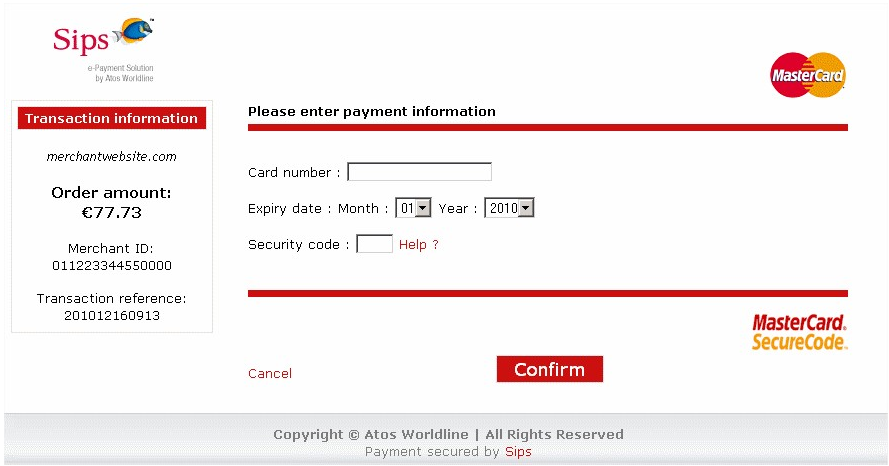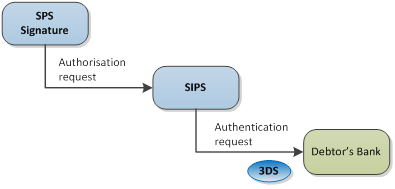Principle
The principle of this scenario is to collect the expression of the customer agreement with a card authentication.
| Enter the information on the mandate | 1. The creditor inputs the mandate information. 2. Visualization of the mandate as a PDF file and validation of registered data. |
| Authenticate the debtor credit card | 3. The debtor provides the information of his credit card to indicate his agreement. 4. WL triggers a 3D secure payment card. |
| Signature or validation of the PDF mandate | 5. If the authorization is positive, the signature system performs an OTU signing of the mandate. 6. Generation of an OTU certificate in name of the debtor. 7. Signature of the mandate. 8. Time stamping and constitution of the body of evidence: the information from the 3D secure payment is conserved among the evidence. 9. Preservation of all the evidence for probationary purpose. |
| Delivery of the service | 10. Once the mandate is signed, the creditor can deliver the service. |
SIPS:
The creditor won’t have to contract with SIPS, the authorization will be made on the SPS Signature’s name and no debit will be processed.
Sample of SIPS page:

Authentication Process

Description of the credit card authentication:
- This agreement method redirects the debtor to a SIPS card payment page;
- The debtor has to enter his card number;
- SIPS asks an authentication to the debtor’s bank;
- The debtor’s bank can use a 3DSecure process in order to ensure the authentication of the debtor;
- SIPS receives from the debtor’s bank a result that authenticates or not the debtor and sends the result to SPS Signature module;
- In any case, the authorization is automatically cancelled by SIPS.
Specific Error Cases:
If the authorization is refused by the bank, or the card is rejected, the session will be marked as failed. There is only one try, if the Creditor wants to give another chance after a failure, a new session should be created.
If the user never reaches to the end of the workflow, the session’s state will be flagged as aborted by the user.
Advantages / Disadvantages
The following table presents the advantages and disadvantages of the agreement using credit card authentication.
| Advantages | Disadvantages |
|---|---|
| The process is one real time | The debtor course must be well explained to justify the use of the card. |
| The authentication can be used for known and prospect customers |
How to use this Workflow
This workflow is applied for known and unknown customers. However, this workflow applies mostly for prospective buyers. In order to use the agreement process using credit card authentication, the creditor only has to subscribe to SPS Signature.
Evidence Elements
The collected evidence that is common to all processes is listed in Evidence chapter.
Specific evidences of the agreement using credit card authentication are the following:
- Authorization identifier;
- Masked PAN;
- Amount of the transaction request;
- Date of the authorization.